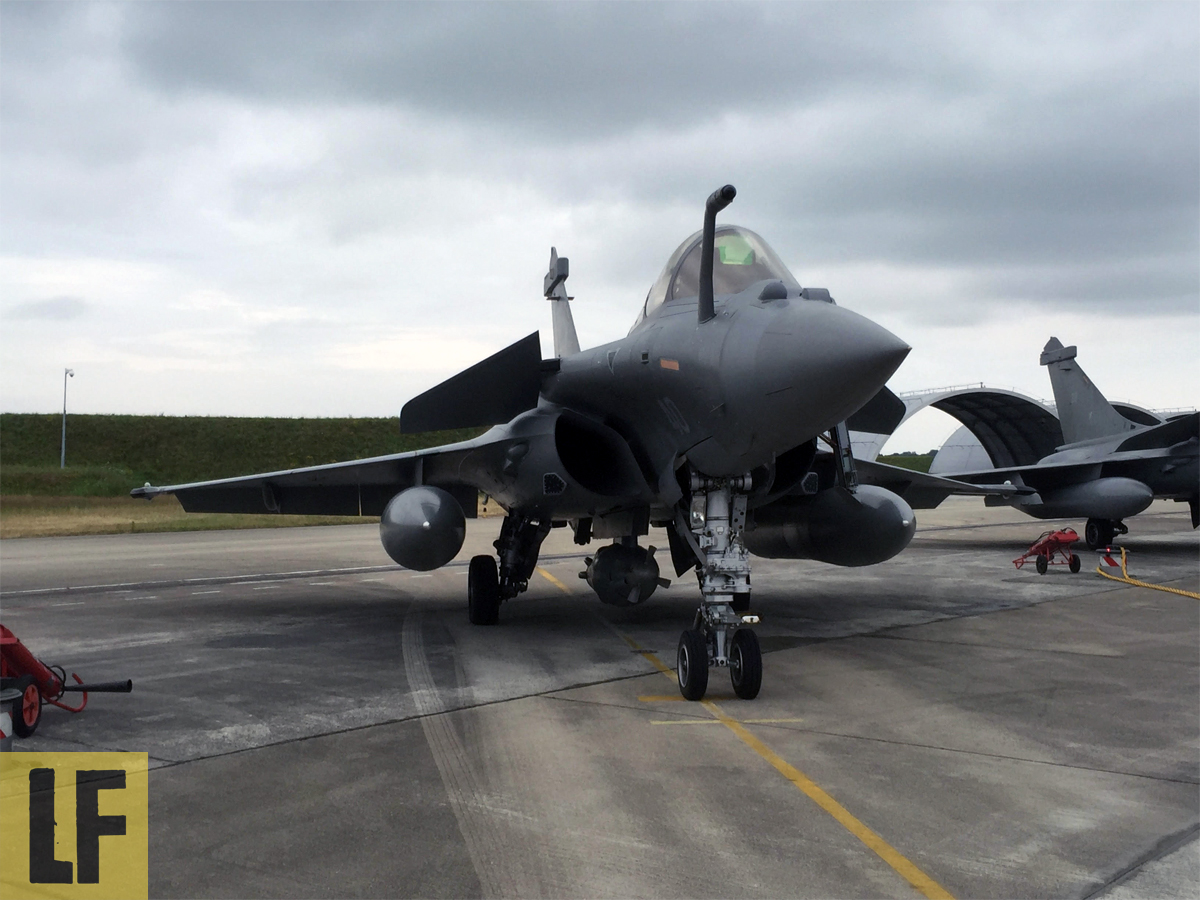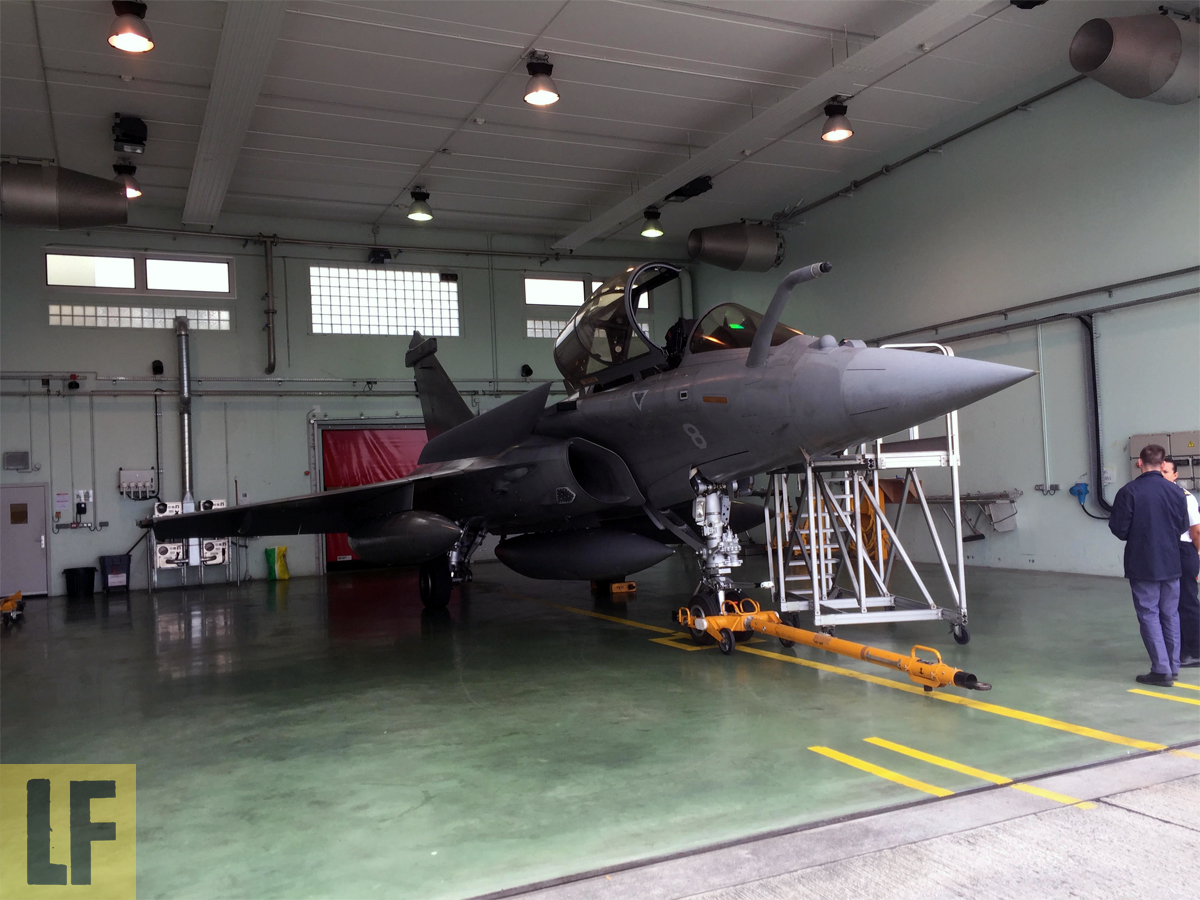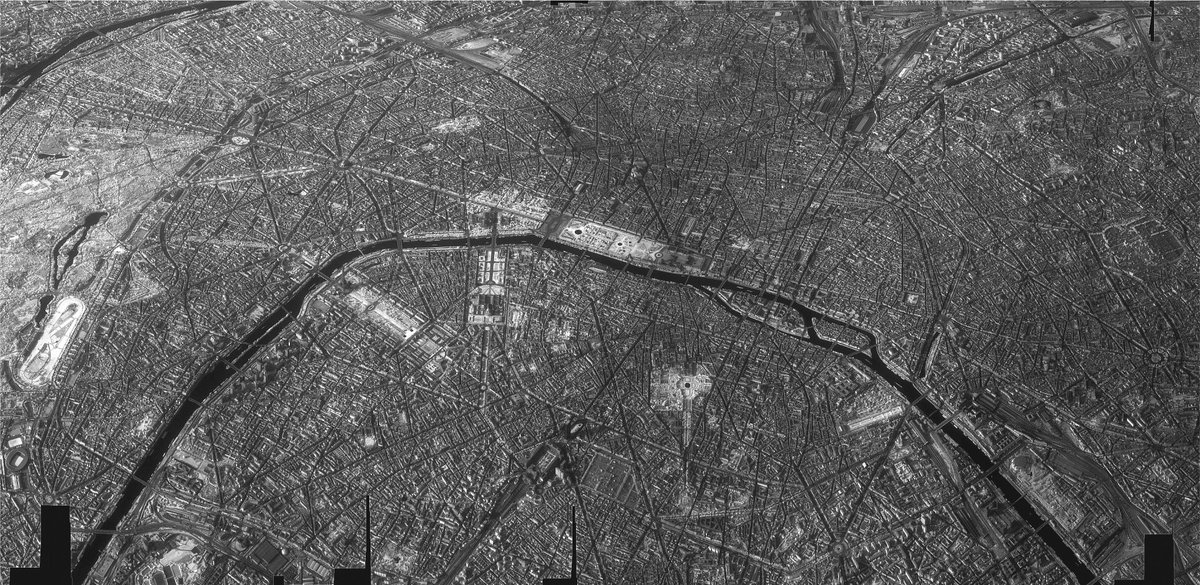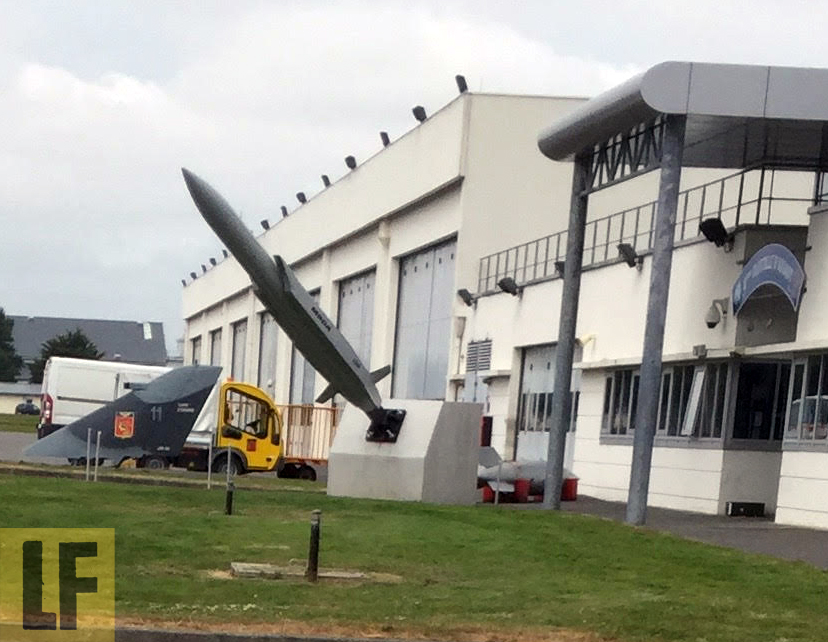
When Indian Air Force chief Birender Singh Dhanoa takes off for France today and straps into an Armée de l’Air Rafale later this week, it’ll be shortly after he receives the most detailed operational briefing France has ever given to a foreign military chief. With videos, photographs and operational data, the Indian Air Chief Marshal will be provided the most comprehensive view of the Rafale in anger, chiefly the strike missions it has undertaken since last year over Iraq and Syria against Da’esh/ISIL targets.
India signed on for 36 Rafale fighters (the Indian Rafale detailed here) in September last year, over a year after the start of Opération Chammal, the French military’s participation under U.S.-led Operation Inherent Resolve. Ever since, the military wing at the Indian Embassy in Paris has been provided periodic official updates on the Rafale at war, information seen as imperative to the aircraft’s most important foreign customer. A customer, it must be noted, that chose the Rafale after what is widely regarded as the most grueling field evaluation, but has remained inquisitive about the aircraft in a true combat scenario.
Last month, Livefist had the opportunity to visit the French Navy’s Rafale hub, the Landivisiau air base in north-west France on the Brittany coast. It is here that the navy’s Rafale-Ms are based, maintained and its pilots trained for operations off the Charles De Gaulle aircraft carrier, which, when docked is based just under 1,000 km away at Toulon on France’s south-east Mediterranean coast. At Landivisiau, Livefist met with Rafale pilots from Flotille 11F, one of three Rafale M squadrons, each providing an immersive first-hand view of combat operations over Libya, Iraq and Syria. Among those tales from angry Rafale cockpits at war, we choose ten:

[dropcap]1.[/dropcap] “Before Libya, the Rafale-M was on teenage missions. Libya was our first adult mission,” Landivisiau base Commanding Officer Capt. Pascal Lassan tells Livefist, referring to the eight years (2002-2010) that Rafales were deployed over Afghanistan, their first combat mission. No Rafale pilot disagrees. Cassan, who flew one of the Rafales that entered airspace over Libya in March 2011 designates Opération Harmattan a true ‘gamechanger’ for the aircraft and its pilots. Flying combat air patrol missions against Gaddafi’s desperate fighter jets, Cassan admits the Rafales got their first true trial by fire in Libya, stretching out their new laser pods, Link 16 and rules of engagement that had to be updated literally on the fly. It was over Libya, Cassan says, that the Rafale first got a chance to demonstrate its ‘omnirole’ tagline. ‘Libya would shape everything that the Rafale would do going forward,’ he says.
Your correspondent, incidentally, was on the ground in Libya during a bombing run by Libyan fighters just days before the Rafales arrived on March 19, 2011.

[dropcap]2.[/dropcap] A Commander-rank Rafale M pilot who has flown missions both during Opération Harmattan in Libya as well as the ongoing Opération Chammal against Da’esh targets in Iraq and Syria, says mission endurance and potency have multiplied manifold since 2011. For instance, while missions over Libya were no more than 2.5 hours, combat sorties over Iraq and Syria currently average 6.5 hours with three mid air tank-ups. Rafales currently have a 600 nautical miles unrefuelled range from the aircraft carrier. Crews maintaining the jets on the carrier told Livefist that the two squadrons at sea enjoy a 97% availability rate (as opposed to 70% rate on shore).
“I was deployed on three six hour missions in two days in September last year, all involving deep fight raids and combat air patrol over Iraq. We can stretch that number. Things have changed completely,” the officer says. “We’re operating with other forces, principally the U.S. Navy and Air Force. Staying in the air longer to provide reconnaissance, targeting or other support is common now from both sides for aircraft that have expended their weapons in strikes.”
Livefist was shown video footage of a coordinated strike earlier this year in Ramadi, Iraq involving a U.S. MQ-9 Reaper that had expended its armament load, but needed to effect a strike because intelligence had pointed to a closing time window on a vehicle-borne improvised explosive device (VBIED). The Rafale pilot who was called in to help explained the loop: the Reaper was cleared to engage the target, but couldn’t because it had finished its Hellfires on the same mission a few hours earlier. The Rafale, flying a close air support mission nearby was summoned to link up with the Reaper and receive its target solution. The course of this target sharing includes France’s own independent vetting of targets under the Chammal chain of command. Once cleared, the video shows the Rafale deploying an AASM Hammer guided bomb to destroy the VBIED.

[dropcap]3.[/dropcap] Rafale pilots at Landivisiau cannot stop talking about the AREOS recce pod. One pilot spoke of how the imagery AREOS pods produce during even high speed low altitude runs have upped the premium on Rafale sorties as part of Operation Inherent Resolve. “Rafale pod imagery is almost a currency now in the air over Iraq and Syria. We share those images, and the premium placed on our mission and involvement goes up. Coalition partners love the imagery capability they’re getting to tap into through our missions,” he told Livefist. (The AREOS pod comes with the Indian Rafale.)
Nearly every pilot that Livefist spoke to made it clear that the TALIOS new generation targeting pod couldn’t possibly come sooner to replace the near obsolete DAMOCLES pod. “The Damocles is manages to stay useful, but only barely. As part of the coalition, pilots have access to laser designation and target painting resources by partners in the air — it could be a Super Hornet or a Predator,” one pilot says.
[dropcap]4.[/dropcap] Capt. Cassan, who says he has flown F/A-18s for three years and deems it a ‘versatile multi-mission jet’, says that when it comes to long range sensors, the Rafale still manages to see ‘much better than what the Americans can see’. He’s referring to the Thales RBE 2 AESA radar on the Rafale. ‘Every pilot that’s now flying over Iraq or Syria will tell you that they’ve got or are getting more than they’ve expected in terms of sensors and tracking systems. The Meteor missile is just going to take all of that together and multiply it manifold. We cannot wait to see it deployed,’ says one of the pilots.
[dropcap]5.[/dropcap] ‘We drop more GBU-12s than any other weapon at present,’ confirms the Commander-rank pilot quoted before. Over Mosul, the pilot says, Rafale crews have effectively deployed Sagem AASM Hammer bombs (SBU-54/38/64), which have reportedly proven highly reliable against moving targets. The AASM kitted CBEMS 250 is also expected to see greater usage, the pilots indicated.
“I dropped an SBU-38 recently about 90 feet from a mosque in Mosul. There was clean visual confirmation of a VBIED under preparation. It was a precision attack with no apparent collateral damage,” he says. The BLU-126/B of the US Navy is currently the major low collateral damage bomb in use, with France waiting for its own — trials currently on. Pilots say they’re waiting for GBU-24s to be cleared for Rafale carrier operations.
The SCALP stand-off cruise missile has also seen heightened use under Operation Chammal. A pilot who launched SCALP weapons on two occasions in 2015 in Iraq and Syria says it is, not surprisingly, the most prized weapon currently in the Rafale’s strike arsenal. ‘The opportunity to send out a SCALP always means a mission to destroy a heavy duty target in an environment that could pose an air defence threat. While our young pilots are ever ready to get into dirty airspace to open up with bomb raids, each is waiting for a chance to let a SCALP loose,” he says.
[dropcap]6.[/dropcap] “We’ve been tracking the Russians as a matter of routine, including the Kuznetsov battle group and submarines too,” one pilot says. He wouldn’t confirm if the Russian submarines tracked by French Rafale-Atlantique crews include the new generation Russian Krasnodar diesel electric submarine, which deployed Kalibr cruise missiles against Da’esh targets in May this year. “We’ve got to keep a daily tab of what Russian and Syrian aircraft are doing. The E-2Cs from Charles de Gaulle have a full time job, and we’re constantly hooked up,” he says.

[dropcap]7.[/dropcap] In 2016, with Russian jets from the Kuznetsov over western Syria, Rafale crews operating in the area were tasked with entering airspace to acquire something they didn’t have: the attack mode of a Russian Su-33 radar. Two Rafales used their SPECTRA integrated electronic warfare systems on a 90 minute mission that finally ended in success. “It was a small but very important mission, and it helped sharpen how we use electronic warfare and signature acquisition in some of the most difficult and crowded airspace in the world,” a pilot who was in one of the Rafales says.
[dropcap]8.[/dropcap] Every Rafale pilot who has flown sorties over Iraq or Syria that Livefist spoke to confirmed that Da’esh/ISIS had experienced a major loss in offensive capability, but still maintained potent defences against air strikes. “They’ve suffered a huge loss of territory, including Mosul. But they are still resilient,” one pilot says. “There is a definite SAM threat over Syria and Libya. The Da’esh still employs a variety of tactics to evade Rafale strikes. These include mobility, terrain shaping, obstruction, camouflage and concealment, even enormous smoke clouds like Desert Storm.”
[dropcap]9.[/dropcap] Air strikes in Mosul have proven more difficult than any other part of Iraq, Rafale pilots at Landivisiau confirm. One pilot, who flew missions there earlier this year, says the challenge went beyond the fact that strikes needed to be precision attacks in built-up areas. “It was very hard to target in Mosul. We were operating in crowded airspace. It wasn’t clean at all,” he says. Adding to the cluttered airspace were veritable swarms of drones deployed both by Da’esh as well as Iraqi forces — quadcopters sometimes armed with grenades. “The game-changer will be low collateral damage bombs that currently in trials for use in Iraq and Syria. Another mission like Mosul will be difficult without those,” the pilot says.
[dropcap]10.[/dropcap] The Angry Rafale-M is rapidly becoming a Rafale after dark, and pilots flying missions off the Charles de Gaulle carrier swear by how much easier they’re finding it to trap by night than in daylight. “It’s almost a pleasure to trap at night. All we’ve got to do is align the vector instead of the mirror. With a wider HUD, landing is no longer the anxiety it used to be,” says Capt. Cassan, the Landivisiau CO. With half of all Rafale M pilots qualified to night trap at sea, half of all current operations have shifted to after dark hours over Iraq and Syria.
Coming soon: Livefist Dogfight 2: Rafale Vs. Super Hornet

Merci beaucoup Shiv Aroor
Mid East cannot be compared to Indian scenario. The Indians will face tough odds in terms dense SAM, anti air craft guns and of course air defence fighters from opposing armed forces. Guess above sceanrio are more of practice or exercises.
Mr Venkat you r right. Those French fighting war with inferior warriors. French are not battle harden community at present. Indians have more exposure of any type of wars then those French troops. French are good in ‘war games’ which they play against small bandits under US & UK shelter.
rafale in anger? more like rafale in ‘aspiration’. you need to stop being so gullible. do some critical reporting instead of this bs.
In anger, means in active conflict operations. Get an education, sir.
In anger is in operation against scum bags
Thik hai.
France paisa kama raha hai aur apna ‘Tejas’ eak itihas ho raha hai.
Why we publish such news with so much details? Only China, Pakistan and France will gain from such publicity.
It seems very foolish approach.
Mr Venkat you r right. Those French fighting war with inferior warriors. French are not battle harden community at present. Indians have more exposure of any type of wars then those French troops. French are good in ‘war games’ which they play against small bandits under US & UK shelter.
what are the availability rates of mig 29k vs price comparision.
Rafale F3R can be compare to F18
but
Rafale F4 must be compare with F35
In the entire article, there is one fact one can clearly see: capability! and it comes at a price. Thats one big reason why India should not abandon any R&D despite calls from loosers on abandoning tejas and other project. Compared to procuring expensive weaponry that presents innovations, we should innovate our own. For now, rafale is a good asset for IAF and we should have had more in our kitty. possible manufactured in India
now theyl, import f16 or saab and start bragging proud abot how they protect india thats where tragedy is…
same money could have been invested in tejas mk2 tejas mkr set up production lines and speed up the project